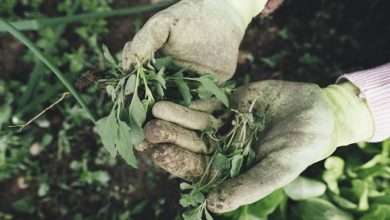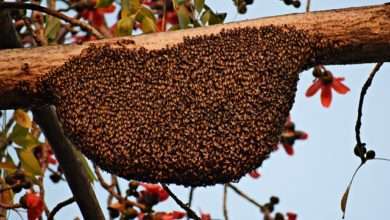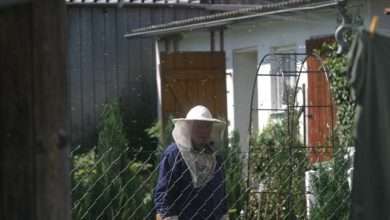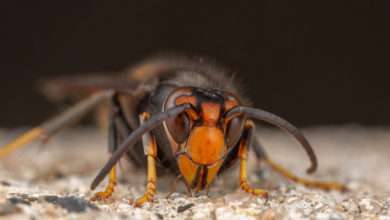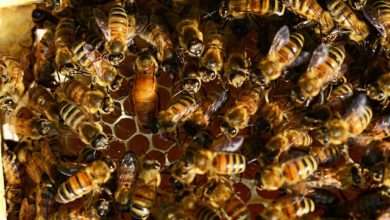Should You Wrap Your Bee Hives?

Should you wrap your Bee Hives?
Wrapping your hives is only necessary if you live in a colder environment. After daytime highs drop below freezing, consider covering your hives.
Wrapping the beehives in the winter is crucial for the colony’s survival, particularly in colder locations.
Wrapping a hive improperly may be disastrous. In NO CIRCUMSTANCES should you ever use tightly-wrapped plastic around your hive; doing so will kill the bees within?
Does it rule out the need for wrapping presents? There is some truth to both of those statements. It’s typical in the beekeeping community for fervent advocates on both sides of any given topic. Indeed, many hives survive the winter without being covered. However, if properly provided insulation, bees might experience less winter stress in cold areas.
Wrapping your hives is a good general practice if you reside in USDA Zone 5 or below, according to several beekeepers. The key is to cover your hives so the bees will remember the wrappings for signs of spring and leave early.
Protecting a hive during the Winter
If it’s freezing outside, how do bees fare within the hive? Keep in mind that bees don’t hibernate throughout the winter and work tirelessly toward their one aim of protecting the queen. One way they do this is by turning up the temperature inside.
At around 55 degrees Fahrenheit, the bees gather around the queen and vibrate their wings to create heat. As temperatures drop, the cluster becomes denser.
In contrast to popular belief, they do not use body heat to warm the whole hive but rather concentrate it in the small area where the queen resides. At its core, the temperature is kept at about 96 degrees Fahrenheit, while at its periphery, it drops to around 41 degrees Fahrenheit.
Below 41 degrees F, bees enter a state of torpor where they cannot move. The bees in the middle switch places with the bees on the outside so that no one gets too tired. As a unit, the cluster travels through the hive, stopping to consume honey at various points.
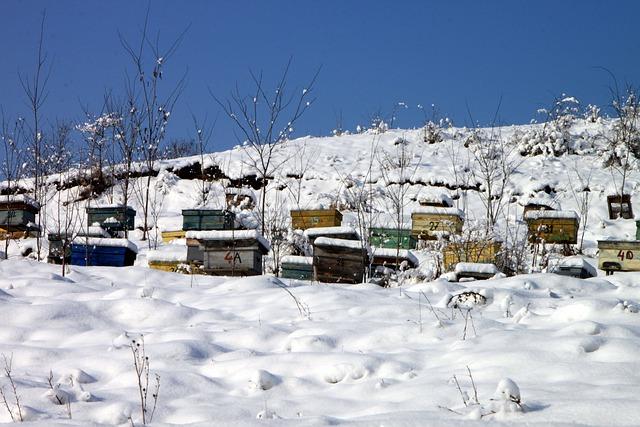
The need for constant ventilation
For this reason, a hive should never be enclosed since a winter cluster generates wet, humid air that has to be released. Having a way for the bees to do “cleaning” flights to remove waste from the hive and venting the wet air from above are benefits of having an upper entrance.
Proper ventilation is essential while preparing hives for the winter. In other words, you must attempt to seal off all airflow from the hive. One of winter’s most lethal elements is condensation.
Hives require airflow ventilation holes to avoid condensation. Though it may seem paradoxical to provide a gap through which cold air might enter the hive during the winter, bees fare better when exposed to cold air than to dripping water at the same temperature.
The ventilation of beehives throughout the winter is a delicate balancing act for beekeepers. When there is too little, condensation forms, and when there is too much, the bees can’t keep the hive warm. Condensation provides the bees with drinking water, but when it becomes too heavy, it falls on the bees like icy rain.
Depending on the weather, propping the roof open with a shim may create too much airflow. An Imrie shim, a rectangular wood frame approximately % of an inch high with a beehive entrance hole cut into one end, is a more practical alternative to drilling a one-inch hole in the top corner of the upper brood box.
Types of Beehive Wraps and Winter Accessories
Hive wrapping may be done in various methods, from inexpensive to extravagant.

Styrofoam:
Foam core board. In contrast to tar paper, this helps keep the hive’s internal temperature steady rather than letting heat escape.
Hay bales:
Bales of hay, or hay bales. These may be piled up on three sides of the beehives while leaving the fourth side free for access.
Tar paper:
Black tar paper, a typical building sealant, might potentially increase the temperature within the hive by absorbing sunlight. Stapling the paper to the hive is the first step; remove the paper from the top and bottom air vents using a utility knife.

A bee cozy:
Comfortable clothing for a bee. Prefabricated fiberglass-filled plastic sleeves designed to fit over the hive box. Their water resistance and breathability make them ideal for maintaining a comfortable climate in any weather.
Thermal reflective bubble wrap:
Insulating bubble wrap. DIYing this is a breeze since all you need to do is cut to size and fasten it using Velcro.
Wrap the box tightly against its outside surface whichever manner you decide; otherwise, bees may become caught in the space between the box and the wrap, get chilly, and perish. The boxes are packed squarely since this makes wrapping easier and prevents bees from entering via any gaps that may form between the box and the insulation.
If wrapping the hives isn’t an option, think about insulating the cover assembly using a foam insulating board or a telescopic insulated cover.
Be sure to screen off any fiberglass insulation you have to prevent the bees from removing it. Most heat is lost from a hive’s “attic,” much as it is from a house; thus, insulating the ceiling provides some protection and helps decrease condensation. Condensation is reduced with the use of a quilt box.
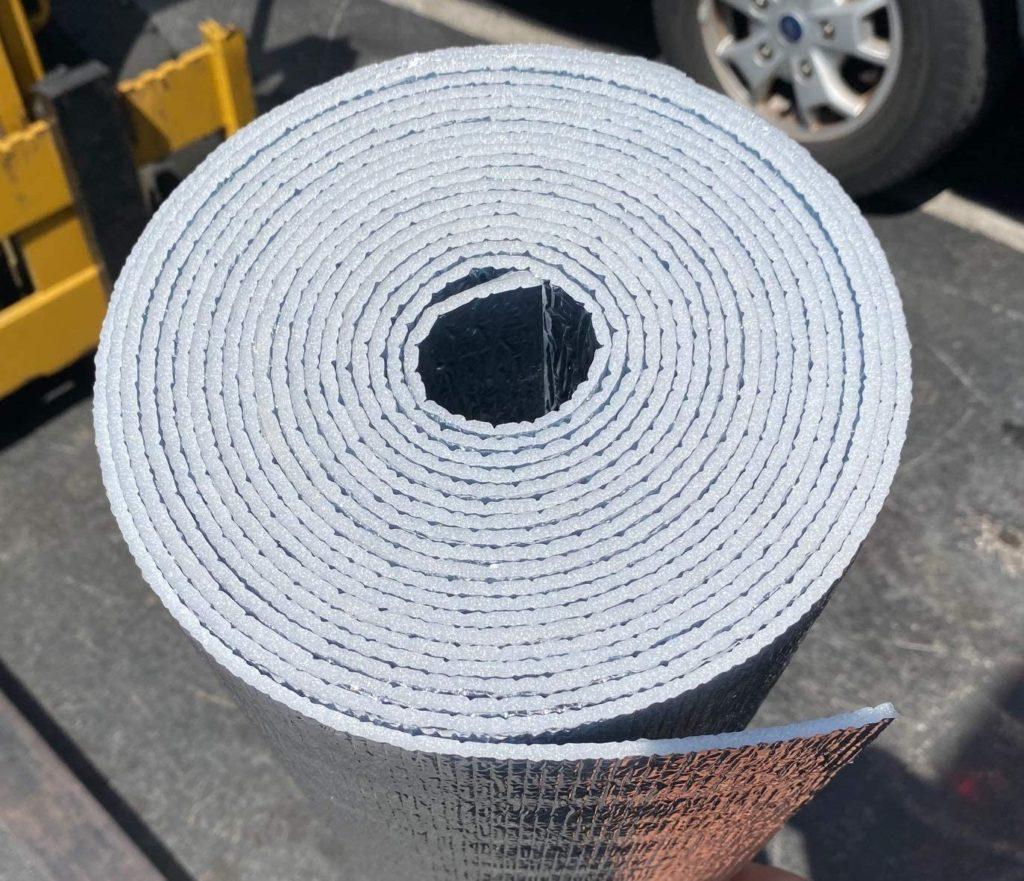
If winter winds blow through your region, it is recommended that you construct a wind barrier using a wall, stack hay bales, or avoid housing your hives in an open-sided shed or barn.
As long as the bees can easily access the entrances to the hives, a snow mound on top of the hives might be advantageous as insulation.
Anyone still on the fence about whether or not to cover their beehives for the winter might try it out by wrapping some and leaving others bare. What you decide to do about wrapping up throughout future winters may depend on how well these two strategies work.
Although bees in the wild may survive the winter without human assistance, those who maintain bees in artificial hives may need to provide supplemental heating or other measures to ensure their survival.
Frequently Asked Questions
Should I wrap my hive to keep my bees alive during the winter?
Unwrapped hives can survive the winter quite well. However, a layer of insulation put in correctly in cold regions might make life easier for the bees throughout the winter. Beekeepers often advise wrapping hives for those who reside in USDA Climate Zones 5 and below.
When do beehives get too chilly for bees?
Using their muscles and exerting energy, honey bees can regulate the temperature within the winter cluster at about 95 degrees. When a bee’s internal temperature hits 41 degrees, it dies. When the temperature drops below 41 degrees, a bee’s muscles tremble and become unable to fly or work.
The question is whether or not a beehive can endure the cold season.
Honey bees have remarkable adaptations that allow them to survive the winter, when temperatures drop below freezing and blossoms are scarce. Honeybees must generate heat and store enough food within the hive to last till spring.
What is the minimum temperature at which bees will stop clustering?
When there aren’t many flowers around, the bees can keep their clusters at a more comfortable temperature. However, they do not allow the inside temperature to drop below roughly 64 degrees Fahrenheit (18 degrees Celsius), which is the bare minimum at which they can generate heat.
When it comes to temperature, how low can bees go?
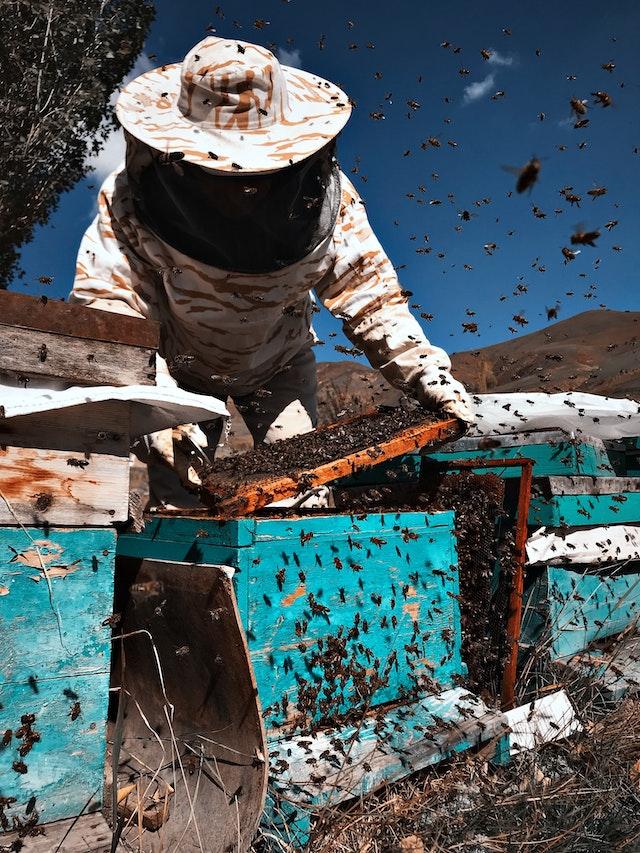
Outside of a cluster, honeybees can survive temperatures as low as 46 degrees Fahrenheit (7.8 degrees Celsius), but the lowest temperature inside is roughly 55 degrees Fahrenheit (12.8 degrees Celsius).
Can I store the queen excluder away for the winter?
During the cold season, the bees will gather together and work their way upward through the hive, devouring the honey reserves as they go. The queen’s exclusion must be removed to prevent the queen from being separated from the rest of the colony.
How many bees should a hive have throughout the winter?
About 25,000 bees (in a Langstroth hive) is the minimum number a colony should have heading into winter. Bees completely swarm all the frames in this approximately deep box. Such a large number of bees is required to successfully cluster in cold weather and transport the cluster to honey storage.
In what circumstances is it not advisable to open a hive?
Wait to open the hive until conditions are ideal, meaning the temperature and humidity levels are just right, and there is no breeze. Ideal temperatures range from 23 to 26 degrees Celsius when the sun is directly above. When the weather is just right, bees will be quite active. Never open the hive on a day with freezing temperatures, heavy rain, or thunder and lightning.
